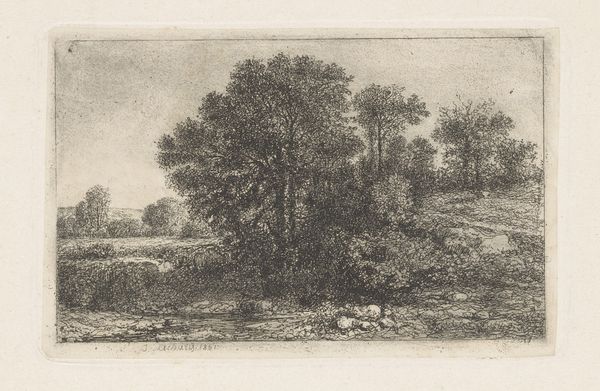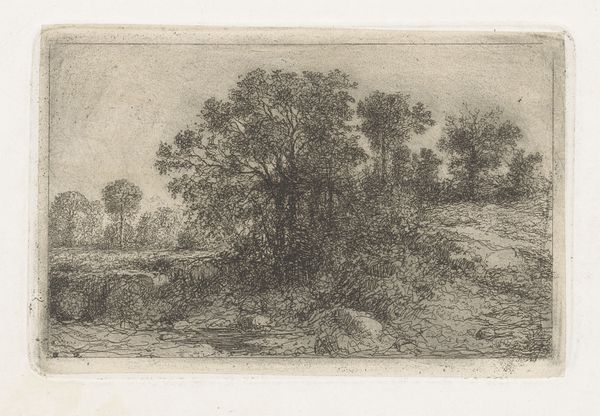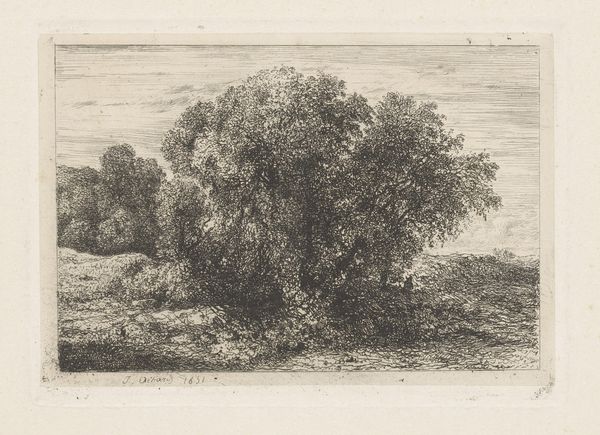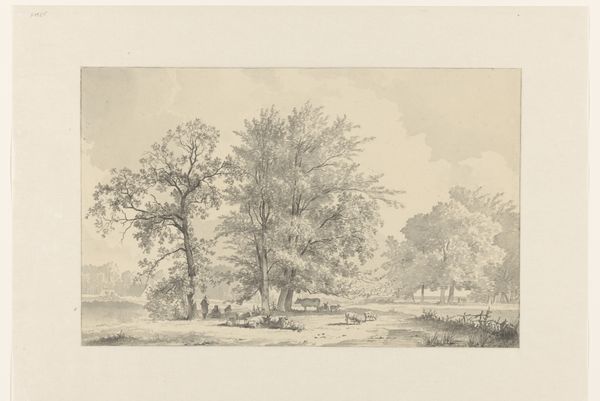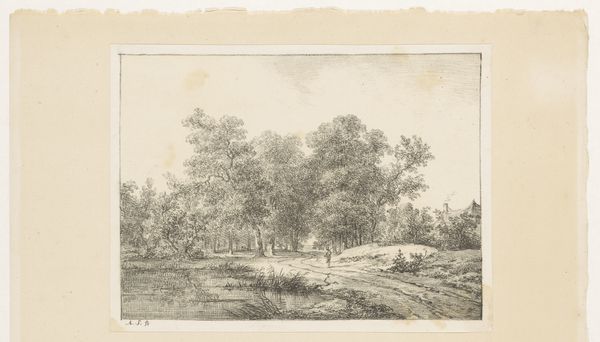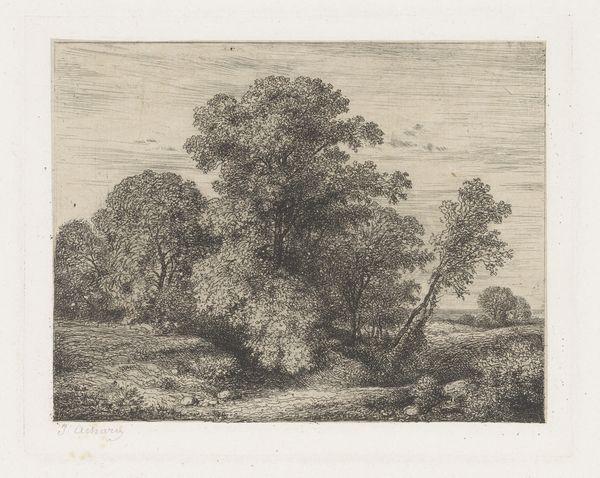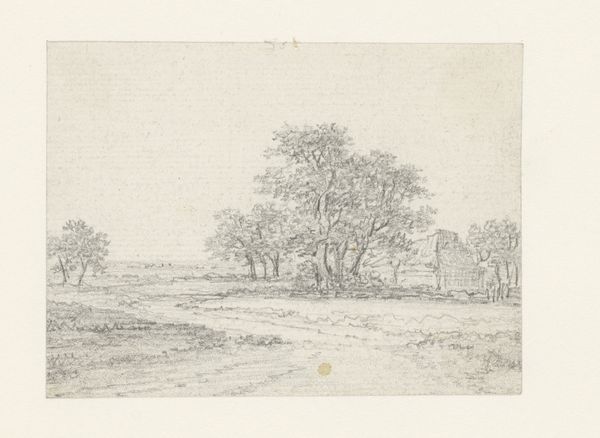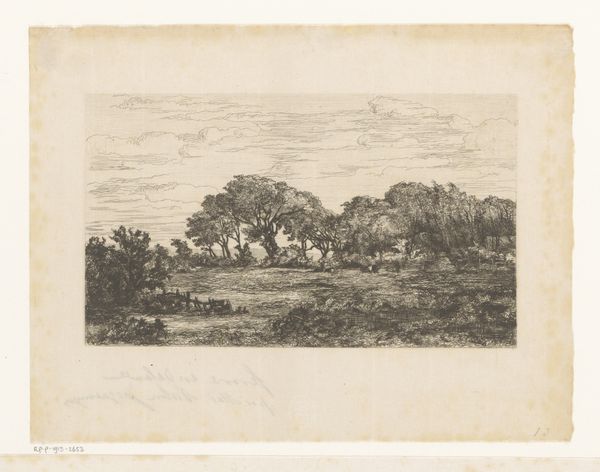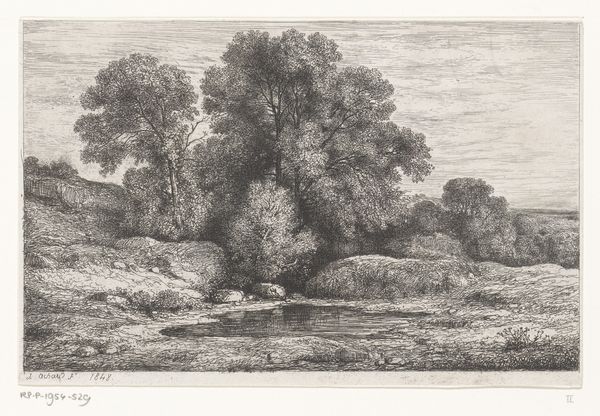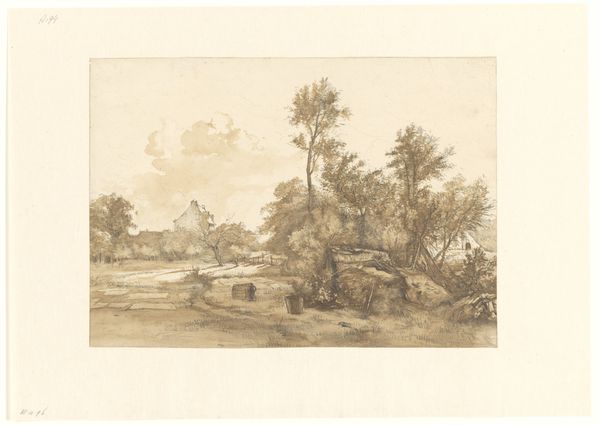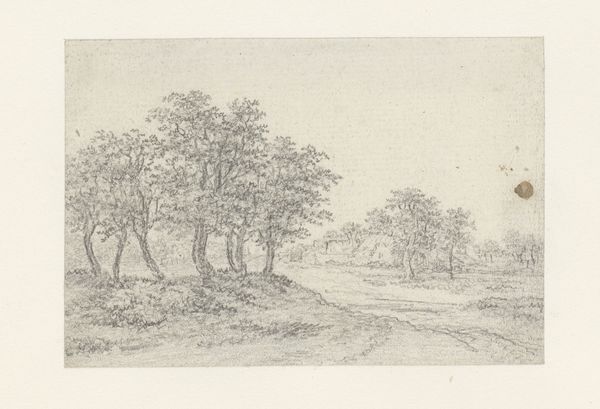
drawing, print, etching, pencil, woodcut, engraving
#
tree
#
drawing
#
aged paper
# print
#
etching
#
landscape
#
pencil
#
woodcut
#
engraving
Dimensions: height 84 mm, width 125 mm, height 94 mm, width 138 mm
Copyright: Rijks Museum: Open Domain
Curator: Immediately, I sense a quiet solitude here. The muted tones and the density of the foliage… It feels introspective. Editor: Indeed. This is “Boomgroep op vlakte,” or "Group of Trees on a Plain," attributed to Jean Alexis Achard. While the precise year isn't pinpointed, it’s placed somewhere between 1817 and 1884. Curator: Achard’s choice of medium – the print, the drawing– that’s what strikes me first. These materials have been around since… well, since forever! So accessible. Did it have anything to do with the accessibility of landscapes in his era? Editor: The multiplication enabled by printmaking processes – engraving, etching, woodcut - ensured wider circulation beyond the elite circles of traditional painting, thus fitting landscape depictions with nascent democratic aspirations in 19th-century Europe. It echoes with a burgeoning market for affordable art. Curator: Absolutely! And let's look closer. It appears the landscape is shaped with labor-intensive processes - careful etching, cross-hatching… There's a clear investment of time and effort, yet this print may have reached the hands of ordinary people. Editor: It invites thoughts about leisure too. Who gets to wander in the countryside, contemplating these trees? Was the consumption of nature an elitist symbol? Achard himself comes from a rather modest background and understands this landscape in his blood, so maybe the trees offer the rural population a mirror. Curator: A mirror, perhaps, framed by the forces of accessibility and artistic choice? What do you mean exactly? Editor: Access is a matter of social classes, while artistic choice relies on which available production process you favor. Here the traditional production choice is to render plain-air drawings, sketches as reproducible form and not end in themselves, therefore allowing ordinary population to enjoy these subjects. The etching, engraving, and various forms of printing processes underscore a movement away from singular masterpieces toward accessible artworks. Curator: So the distribution becomes as crucial as the subject. The seemingly simple portrayal becomes a fascinating knot of socio-economic conditions! It reframes how we see art's public role. Editor: Precisely. It's not just an image of nature; it's an artifact reflecting the era’s dynamics between art production, societal class, and leisure consumption. The group of trees bears more than botanical information, but it tells stories of industrial transformation and shifting access to visual imagery.
Comments
No comments
Be the first to comment and join the conversation on the ultimate creative platform.
